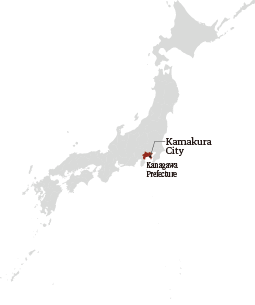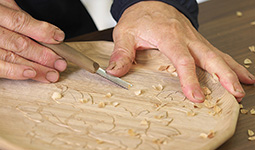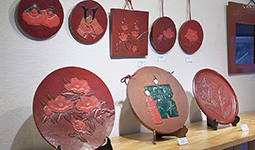Home > Highlighting JAPAN > Highlighting Japan April 2017 > Japan Heritage
Highlighting JAPAN
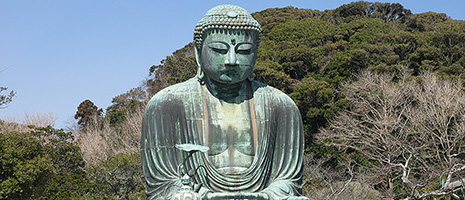
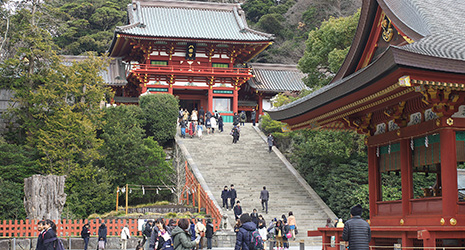
- PREVIOUS
- NEXT
Carving Out a Balance in Kamakura
The people of Kamakura have long sought to protect their natural landscapes and preserve their historical and cultural heritage.
In Japan, samurai warrior Yoritomo Minamoto (1147–1199) came into power at the end of the twelfth century, which led to the start of rule by samurai warriors, a long age of samurai government which continued until the Edo period (1603–1867). As the center of politics, Yoritomo established the Kamakura Bakufu government in Kamakura, a beautiful coastal town surrounded by mountains on three sides.
Here Yoritomo constructed Tsurugaoka Hachimangu and its approach, Wakamiya Oji avenue, in a flatland and built the city around it. The Kamakura government also cut passes known as kiridoshi through the mountain forests to facilitate the smooth transportation of people and supplies.
The Kamakura government constructed many Zen Buddhist and other Buddhist temples during the thirteenth century as well. Kotoku-in with its famous Daibutsu (Great Buddha) of Kamakura is said to have been constructed at that time.
“Kamakura has limited flat ground, so the temples were built in hollows called ‘yato’ surrounded by mountains,” says Yuko Takahashi of the Historic Town Planning Promotion Division of the Kamakura City government. “Shrines and temples built against the background of forested mountains is one of Kamakura’s remarkable landscape features.”
The Kamakura government fell in 1333, but subsequent samurai governments also protected the shrines and temples in Kamakura. During the Edo period, kabuki plays set in Kamakura were produced and the landscapes of Mount Fuji viewed from Kamakura’s beach became the frequent subject of woodblock print artists. In this way people living in Edo (the former name for Tokyo) came to learn about Kamakura and began to make trips to its shrines and temples.
“You could say that Kamakura was a place both for worship and pleasure during the Edo period and became a tourist destination,” says Takahashi. “Wakamiya Oji was lined with many inns, stores and tea houses and was brimming with vitality from so many visitors.”
During the Meiji period (1868–1912), Kamakura’s warm climate and beautiful shallow sea became popular as a resort area, and politicians, business people and aristocrats began to build villas there. At this time Kamakurabori carving, a traditional handicraft, became a popular furniture and souvenir item for such people. Kamakurabori carving is a form of lacquerware into which typically grass and flower patterns are carved. Kamakurabori carving gave a new opportunity for craftsmen who made Buddhist statuary, altar fittings and ornaments to make use of their creativity.
Artists such as the Nobel Prize for Literature-winning novelist Yasunari Kawabata (1899–1972) and movie director Yasujiro Ozu (1903–1963), best known for the classic Tokyo Story, moved to Kamakura, enchanted by its rich natural environment and nostalgic atmosphere. Many movies have been set in Kamakura. Umimachi Diary (Our Little Sister), based on the award-winning manga of the same name and which competed at the Cannes Film Festival in 2015, is the story of three sisters and their half-sister living together in Kamakura.
Large-scale housing projects were carried out in Kamakura during Japan’s high economic growth period in the 1960s, but when plans were hatched to build houses in the Oyatsu green space against the background of Tsurugaoka Hachimangu in 1964, local people fought back, leading to the green space’s permanent protection. This movement ultimately led to the Ancient Capital Preservation Law for preserving the historical culture of ancient cities in 1966 and to the protection of all Kamakura’s landscapes, officially establishing a balance between natural and historical heritage.
“Kamakura aims to develop the city in a way that enables historical heritage and people’s everyday lives to coexist,” says Takahashi. “From now on, we will focus on creating new culture in addition to preserving our historical heritage.”
- PREVIOUS
- NEXT
© 2009 Cabinet Office, Government of Japan
